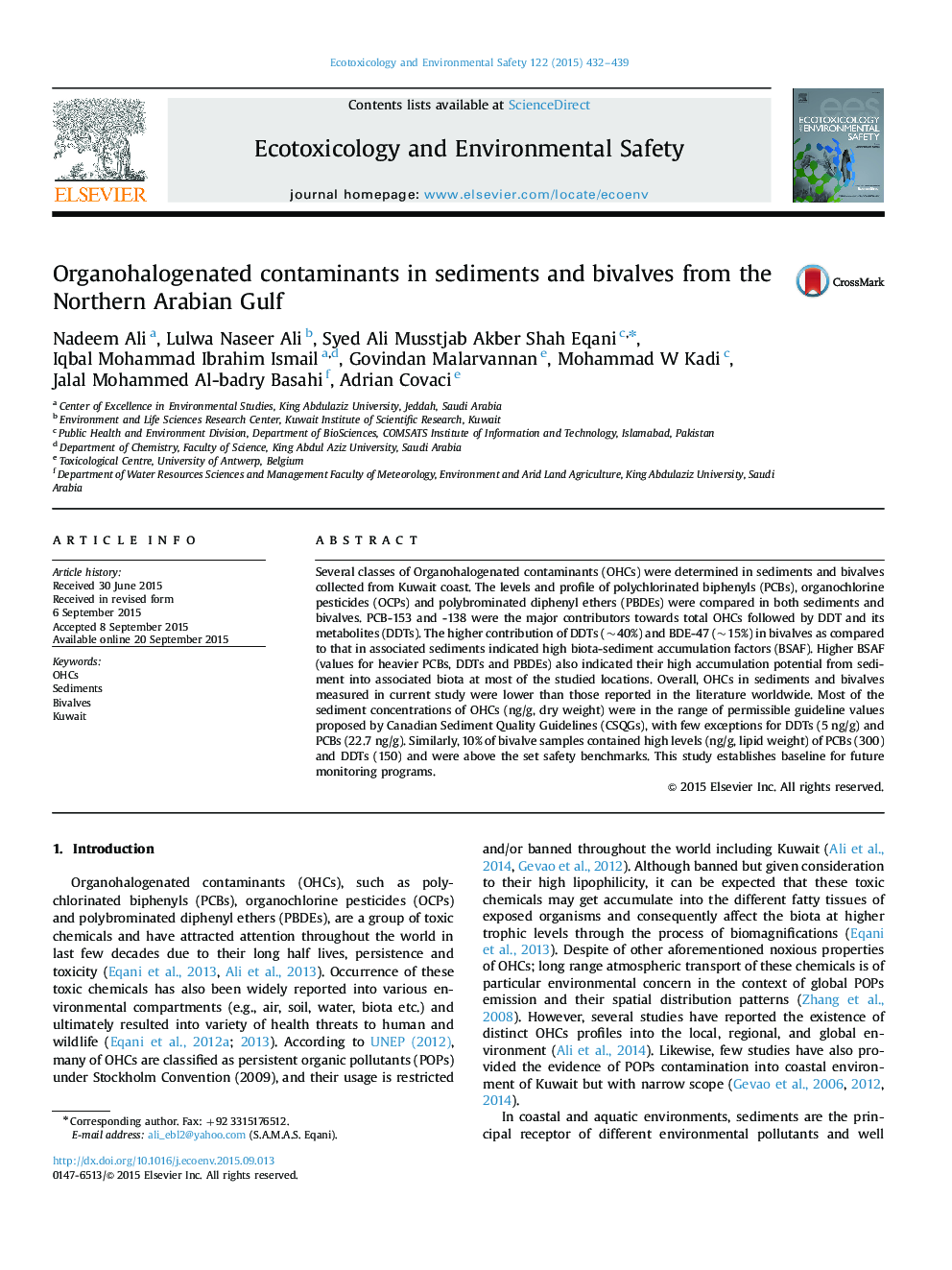| Article ID | Journal | Published Year | Pages | File Type |
|---|---|---|---|---|
| 4419556 | Ecotoxicology and Environmental Safety | 2015 | 8 Pages |
•OHCs were measured in sediments and bivalves from Kuwait coast.•PCB 153 and 138 followed by DDT and BDE-47 were the major contaminants.•High biota-sediment accumulation factors were found for PCBs, DDTs and PBDEs.•10% bivalve and 5% sediments exceeded the set safety benchmarks for PCBs and DDTs.
Several classes of Organohalogenated contaminants (OHCs) were determined in sediments and bivalves collected from Kuwait coast. The levels and profile of polychlorinated biphenyls (PCBs), organochlorine pesticides (OCPs) and polybrominated diphenyl ethers (PBDEs) were compared in both sediments and bivalves. PCB-153 and -138 were the major contributors towards total OHCs followed by DDT and its metabolites (DDTs). The higher contribution of DDTs (~40%) and BDE-47 (~15%) in bivalves as compared to that in associated sediments indicated high biota-sediment accumulation factors (BSAF). Higher BSAF (values for heavier PCBs, DDTs and PBDEs) also indicated their high accumulation potential from sediment into associated biota at most of the studied locations. Overall, OHCs in sediments and bivalves measured in current study were lower than those reported in the literature worldwide. Most of the sediment concentrations of OHCs (ng/g, dry weight) were in the range of permissible guideline values proposed by Canadian Sediment Quality Guidelines (CSQGs), with few exceptions for DDTs (5 ng/g) and PCBs (22.7 ng/g). Similarly, 10% of bivalve samples contained high levels (ng/g, lipid weight) of PCBs (300) and DDTs (150) and were above the set safety benchmarks. This study establishes baseline for future monitoring programs.
